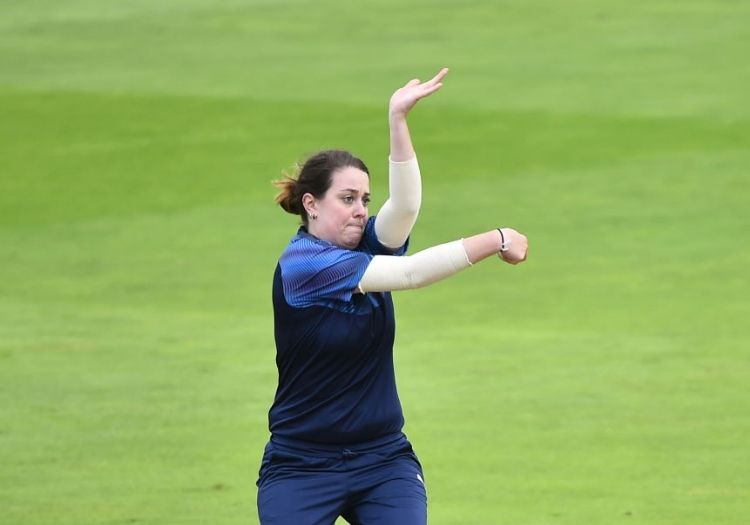KATYA WITNEY: When the women's domestic structure was overhauled in 2019, county cricket was pushed aside in favour of a new regional set-up. However, the county game has remained a foundation of English cricket

In late 2019, the most radical change to the structure of women’s domestic cricket in England was met with huge indignation from many of the counties who had produced England’s best international and domestic cricketers for decades.
At the time, many predicted the death of the county system, with players who had honed their skills for years being suddenly cut off and bereft of the opportunity to play competitive cricket.
The reality, in fact, has not only been the survival of the county system but the expansion of fixtures lists and regional competitions over the last two years.
There is a sense of gradual and grudging admittance from those who wrote off the county game as counter-productive to advancing women’s cricket, that it forms an integral part of producing not only highly skilled international players but also experienced and talented professionals playing the domestic game.
The hostility from many of the counties which greeted the ECB’s dramatic overhaul of the women’s domestic structure in 2019 was in a large part due to the way they had been depicted by the board. County cricket was portrayed as a participation exercise lacking in quality and branded a key reason why England lagged so far behind Australia in their performances.

The Rachael Heyhoe Flint Trophy and Charlotte Edwards Cup sit at the top of the women's domestic pyramid, contested by eight regional sides [Tony Marshall/Getty Images]
This being so, the ECB threatened at one point to withdraw funding from county cricket entirely but opted instead to fund a T20 competition which would provide all counties with four days of cricket per year.
With the aim of the transformation to the regional system being to increase the opportunities to build careers in the sport for female players, cutting off the vast majority of counties and confining their players to club cricket seemed a contradiction to many.
"Removing county cricket doesn’t make any sense when we are trying to grow the women’s game," said an official from Hertfordshire CCC at the time to CRICKETher.
Indeed, the strength of feeling was so widespread that several counties formed a breakaway 50-over championship in 2021 in protest at the lack of centrally funded women’s domestic cricket. The London Championship gained the endorsement of the ECB but operates outside its jurisdiction.
With the regional system in place and offering the best players in the country the opportunity to hone their skills in the Charlotte Edwards Cup and Rachael Heyhoe Flint Trophy, as well as vying for The Hundred selection, county cricket was left to find its own space or fade into no-existence or insignificance.
Instead, the counties have established themselves as the foundation of the game in England.
The London Championship was expanded to include Sussex in 2021 and this year will feature current trophy holders Kent, Surrey, Sussex, Essex, and Middlesex. It ensures there is competitive county cricket across the season and last year featured players of the quality of Cordelia Griffith and Kirstie Gordon - far from a participation exercise.
The success of the Championship has inspired several like-for-like regional comps such as the East of England 50-over Championship, which has been expanded this year to seven teams. With its fixture spread from May to September, it adds structure to the summer and provides a firm base for players to develop their skills and push for regional recognition.

Katie Levick, pictured playing for Northern Diamonds, begins the season just 14 wickets shy of 200 for Yorkshire [Nathan Stirk/Getty Images]
There are also two new regional 50-over tournaments this year, the West Midlands Regional Championship and the South Central Regional Championship, the latter of which runs from May until August and will feature Sussex and Hampshire as well as four other counties. Alongside their London Championship appearances, Hampshire and Sussex have a packed county season.
And these tournaments all follow the Vitality T20 Championship, starting off the season next week.
Crucially, regional centres have made commitments to releasing their players to play for their counties in the tournament, to prepare for the start of the regional season and keep the county game alive and competitive.
Players such as Katie Levick and Lauren Parfitt will feature in the competition which has given The Hundred and England stars the opportunity to force themselves into contention for regional academies and squads, climbing the ladder of professionalism.
All of this cricket makes for a packed summer of county cricket, a world away from what many feared the reality would be.
County cricket has not only found its space in the domestic calendar but forced an important realisation on many that it is the foundation on which the women’s game is built. Without it, an essential artery of talent development would be cut off, and the opportunities of so many talented players to play high standard cricket would be lost.
It is not only the survival of the county game since 2019 but also the hard work and commitment so many have shown to it in order to keep it alive that shows its value. And with it, women’s cricket in this country can continue to grow and thrive.